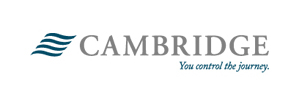Quote of the Week
” People just need to be right.” – Michael Taylor
Technical Corner
The markets sold off last week about 3% if you take into consideration all of the Indexes. The market is up early today (Monday), trying to get back the losses it suffered on Friday. It appears we are still in some sort of a trading range.
Because we use mathematics to drive our investment decisions, the “rate of change” is one of the most important inputs. Over the weekend, I have been watching the graphs of the COVID-19 infections rise exponentially over the last two weeks. When the rate of change is increasing, it is a strong indicator of the future.
What I have noticed is the rate of change is increasing almost every day, especially in Arizona, Texas, Georgia, and Florida. Other states are following this trend but starting from a lower base. The virus cases being reported now are a result of what we did over the last four weeks. Remember, four weeks ago was the Memorial Day weekend plus all the protests. What we will see going forward over the next month will be a result of what we have done recently as far as wearing masks and social distancing. As a country since lifting the “stay at home restrictions” and opening up the country, we have been very naughty.
How this relates to the markets, and the economy is not going to be good going forward. When I talk about the three phases of this economic collapse, I’m reticent to call Phase Two a “recovery.” It is really just a bounce in the data that’s associated with turning all the lights off and flicking them back on one-by-one. By the time you flick on the fiftieth light (in terms of all the states), you are going to realize that the house is on fire. This is something we expect to see in July and August.
Why do I think the house is on fire as far as the markets are concerned? The reason is that corporate leverage (debt) is the problem. We’re headed into this shutdown with the largest corporate leverage problem we have ever seen at the non-financial corporate sector level.
And just what has the corporate sector done from here with all the Fed “liquidity”? They are actually going more in debt to pay the interest on the massive debt they already had on the books. As I said last week, “what can’t go on forever won’t.”
Remember, Real Men wear masks.
Tom’s Thoughts
Social Security/Medicare Trusts Update
The following article from Broadridge Advisors summarizes the latest report on the health of the Social Security and Medicare Trusts. Read on.
Social Security and Medicare Face Financial Challenges
Most Americans will eventually receive Social Security and Medicare benefits. Each year, the Trustees of the Social Security and Medicare Trust Funds release lengthy reports to Congress that assess the health of these important programs. The newest reports, released on April 22, 2020, discuss the current financial condition and ongoing financial challenges that both programs face, and project a Social Security cost-of-living adjustment (COLA) for 2021.
How Social Security and Medicare will be affected by the COVID-19 pandemic is still uncertain; the Trustees acknowledge that the estimates and analysis included in the reports do not reflect the potential effects.
Social Security Trust Funds
The Social Security program consists of two parts, each with its own financial account (trust fund) that holds the Social Security payroll taxes that are collected to pay Social Security benefits. Retired workers, their families, and survivors of workers receive monthly benefits under the Old-Age and Survivors Insurance (OASI) program; disabled workers and their families receive monthly benefits under the Disability Insurance (DI) program. The combined programs are referred to as OASDI. Other income (reimbursements from the General Fund of the U.S. Treasury and income tax revenue from benefit taxation) is also deposited in these accounts. Money that is not needed in the current year to pay benefits and administrative costs is invested (by law) in special Treasury bonds that are guaranteed by the U.S. government and earn interest. As a result, the Social Security Trust Funds have built up reserves that can be used to cover benefit obligations if payroll tax income is insufficient to pay full benefits.
Note that the Trustees provide certain projections based on the combined OASI and DI (OASDI) Trust Funds. However, these projections are hypothetical, because the trusts are separate, and generally one program’s taxes and reserves cannot be used to fund the other program.
Highlights of Social Security Trustees Report
- Social Security’s total cost is projected to be less than its total income in 2020 and higher than its total income (including interest) in 2021 and all later years. The U.S. Treasury will need to withdraw from trust fund reserves to help pay benefits. The Trustees project that the hypothetical combined trust fund reserves (OASDI) will be depleted in 2035, the same as projected in last year’s report, unless Congress acts.
- Once the hypothetical combined trust fund reserves are depleted in 2035, payroll tax revenue alone should still be sufficient to pay about 79% of scheduled benefits initially, with the percentage falling gradually to 73% by 2094.
- The OASI Trust Fund, when considered separately, is projected to be depleted in 2034, the same as projected in last year’s report. Payroll tax revenue alone would then be sufficient to pay 76% of scheduled benefits.
- The DI Trust Fund is expected to be depleted in 2065, 13 years later than projected in last year’s report. For a second year in a row, the depletion date has changed significantly, reflecting the fact that both benefit applications and the total number of disabled workers currently receiving benefits have been declining over the past few years. Once the DI Trust Fund is depleted, payroll tax revenue alone would be sufficient to pay 92% of scheduled benefits.
- Based on the “intermediate” assumptions in this year’s report, the Social Security Administration is projecting that the cost-of-living adjustment (COLA), which will be announced in the fall of 2020, will be 2.3% (last year’s report projected a COLA of 1.8% and the actual COLA was 1.6%). This COLA would apply to benefits starting in January 2021.
Medicare Trust Funds
There are two Medicare trust funds. The Hospital Insurance (HI) Trust Fund helps pay for hospital care (Medicare Part A costs). The Supplementary Medical Insurance (SMI) Trust Fund comprises two separate accounts, one covering Medicare Part B (which helps pay for physician and outpatient costs) and one covering Medicare Part D (which helps cover the prescription drug benefit).
Highlights of Medicare Trustees Report
- Annual costs for the Medicare HI Trust Fund exceeded tax income each year from 2008 to 2015. There were small fund surpluses in 2016 and 2017. In 2018 and 2019, expenditures exceeded income, and deficits are expected for all later years.
- The HI Trust Fund is projected to be depleted in 2026, the same year as projected in last year’s report. Once the HI Trust Fund is depleted, tax and premium income would still cover 90% of estimated program costs, declining to 78% by 2044 and then gradually increasing to 90% by 2094. The Trustees note that long-range projections of Medicare costs are highly uncertain because the health-care landscape is shifting and the effects are unknown.
Why are Social Security and Medicare Facing Financial Challenges?
Social Security and Medicare are funded primarily through the collection of payroll taxes. Because of demographic and economic factors, including higher retirement rates and lower birth rates, there will be fewer workers per beneficiary over the long term, worsening the strain on the trust funds.
What is Being Done to Address These Challenges?
Both reports continue to urge Congress to address the financial challenges facing these programs soon, so that solutions will be less drastic and may be implemented gradually, lessening the impact on the public. Combining some of the following solutions may also lessen the impact of any one solution.
- Raising the current Social Security payroll tax rate (currently 12.40%). According to this year’s report, an immediate and permanent payroll tax increase of 3.14 percentage points to 15.54% would be necessary to address the long-range revenue shortfall (4.13 percentage points to 16.53% if the increase started in 2035).
- Raising or eliminating the ceiling on wages currently subject to Social Security payroll taxes ($137,700 in 2020).
- Raising the full retirement age beyond the currently scheduled age of 67 (for anyone born in 1960 or later).
- Reducing future benefits. According to this year’s report, to address the long-term revenue shortfall, scheduled benefits would have to be immediately and permanently reduced by about 19% for all current and future beneficiaries, or by about 23% if reductions were applied only to those who initially become eligible for benefits in 2020 or later.
- Changing the benefit formula that is used to calculate benefits.
- Calculating the annual cost-of-living adjustment for benefits differently.
You can view a combined summary of the 2020 Social Security and Medicare Trustees Reports and a full copy of the Social Security report at ssa.gov. You can find the full Medicare report at cms.gov.
Copyright 2020 Broadridge Investor Communication Solutions, Inc











